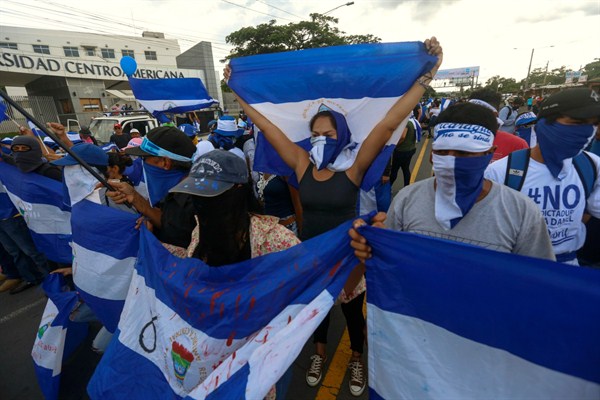Despite recent statements from President Daniel Ortega and his wife, Vice President Rosario Murillo, that things are back to “normal” after their response to what they described as an “attempted coup,” there is nothing normal about what’s happening in Nicaragua. Following the release of a United Nations report detailing the suppression and criminalization of protests that began in April, there have been further efforts to silence government critics.
In late August, the Office of the United Nations High Commissioner for Human Rights issued a blistering report on the political violence in Nicaragua that has killed more than 300 people and injured more than 2,000 in recent months. The report, which covered the period from April 18 to Aug. 18, detailed the government’s initial, repressive response to the anti-government protests and the subsequent “clean-up” operation to forcefully remove barricades across Nicaragua erected by demonstrators, some during pitched street battles with police and security forces. Investigators found evidence of systematic repression involving violations of due process and freedom of expression, arbitrary dismissal of civil servants, arbitrary detentions, enforced disappearances, torture and extrajudicial killings, amid various other violations. The report also catalogued the use of “shock forces” or “parapolice,” which worked either with the consent of or coordinated with government forces and which the U.N. says act with impunity.
The day after the report’s release, Ortega’s government expelled a team of U.N. human rights investigators, claiming that the U.N. was violating Nicaraguan sovereignty. In a lengthy response, it accused the U.N. of bias and claimed that its report ignored violence by protesters, who Ortega once referred to as a “murderous, coup-mongering satanic sect.” In fact, the report acknowledged some violence by protesters, including destruction of infrastructure, the killings of 22 police officers and some episodes of particularly brutal violence against Sandinista supporters. But it found no evidence that the violence was “coordinated or responded to a pre-existing plan.”

